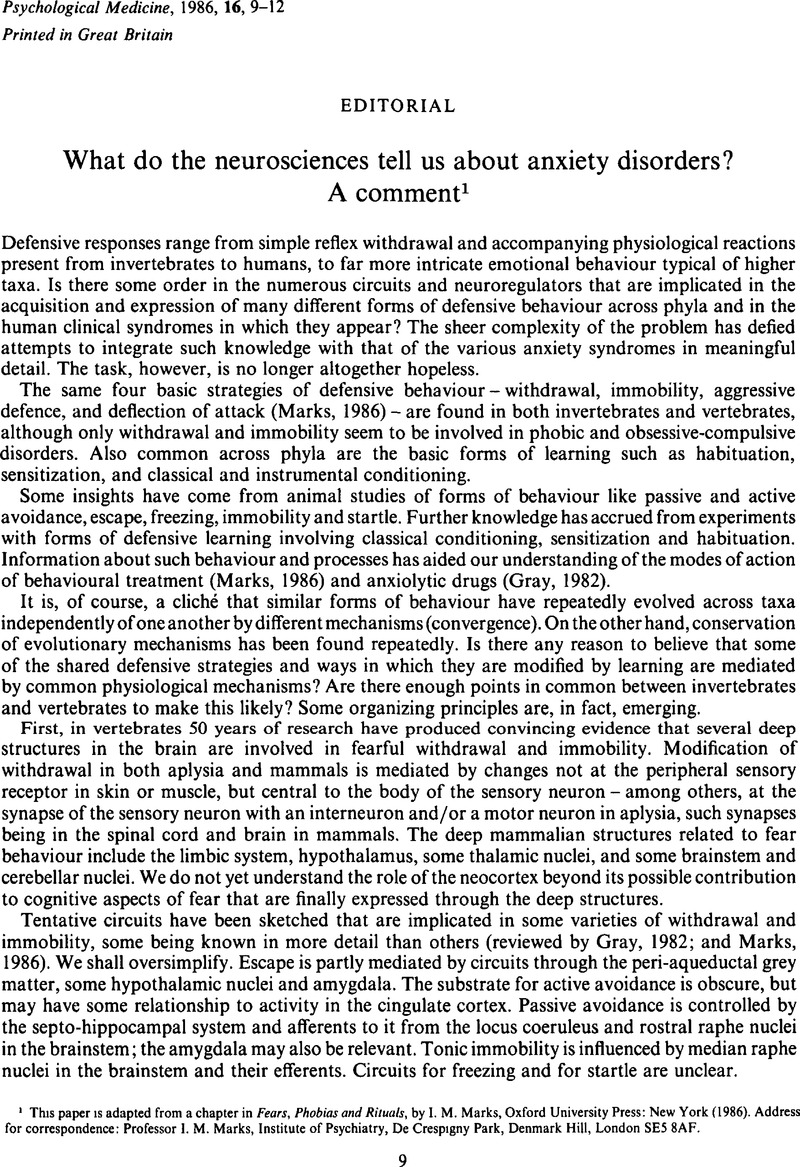Crossref Citations
This article has been cited by the following publications. This list is generated based on data provided by Crossref.
Gentil, Valentim
1988.
Guest editorial: Towards an integrated model for panic disorder.
Stress Medicine,
Vol. 4,
Issue. 3,
p.
131.
Marks, Isaac
and
Toben̂a, Adolf
1990.
Learning and unlearning fear: A clinical and evolutionary perspective.
Neuroscience & Biobehavioral Reviews,
Vol. 14,
Issue. 4,
p.
365.
Polc, P.
1991.
New Concepts in Anxiety.
p.
211.
2012.
A Handbook for the Assessment of Children's Behaviours.
p.
577.





